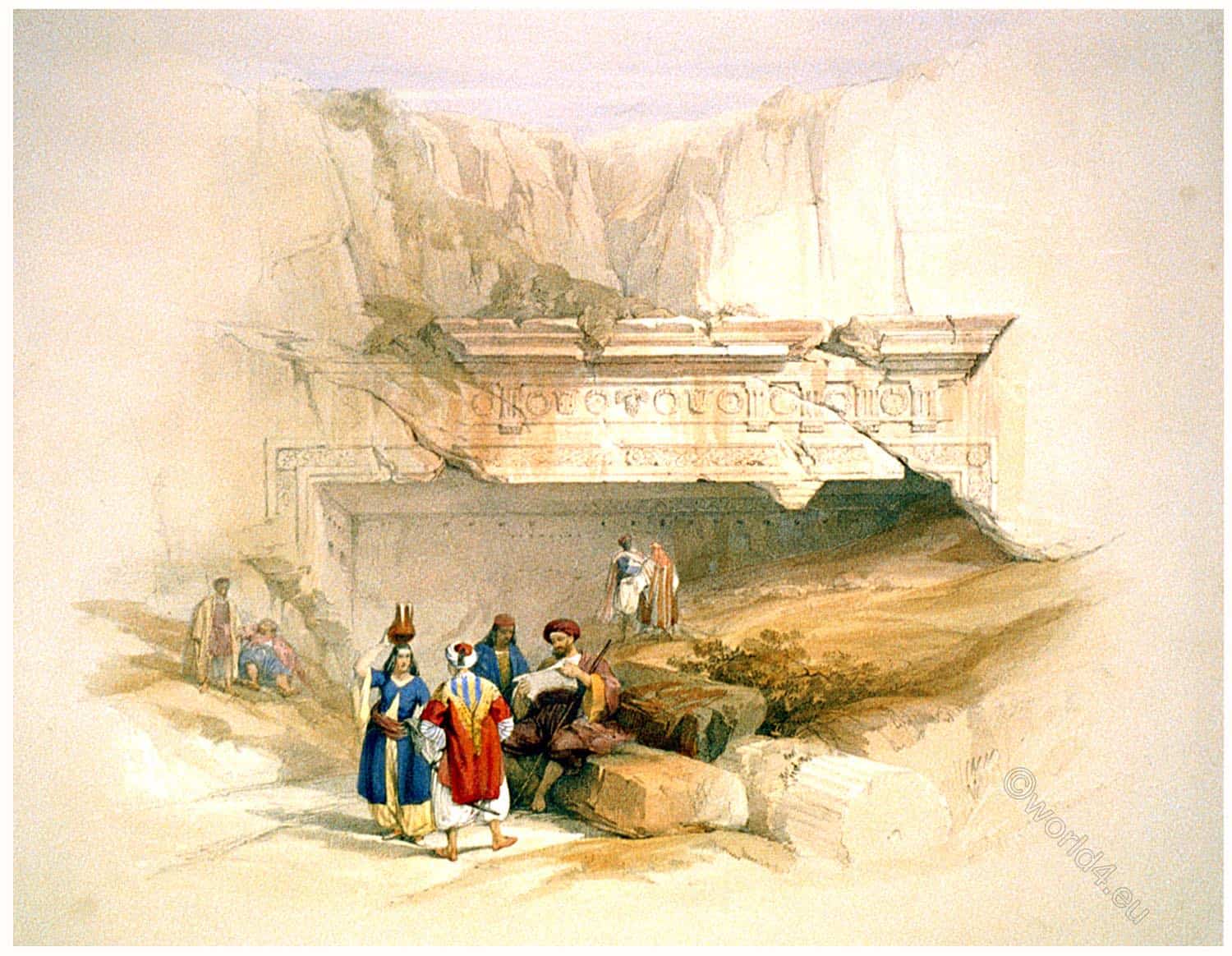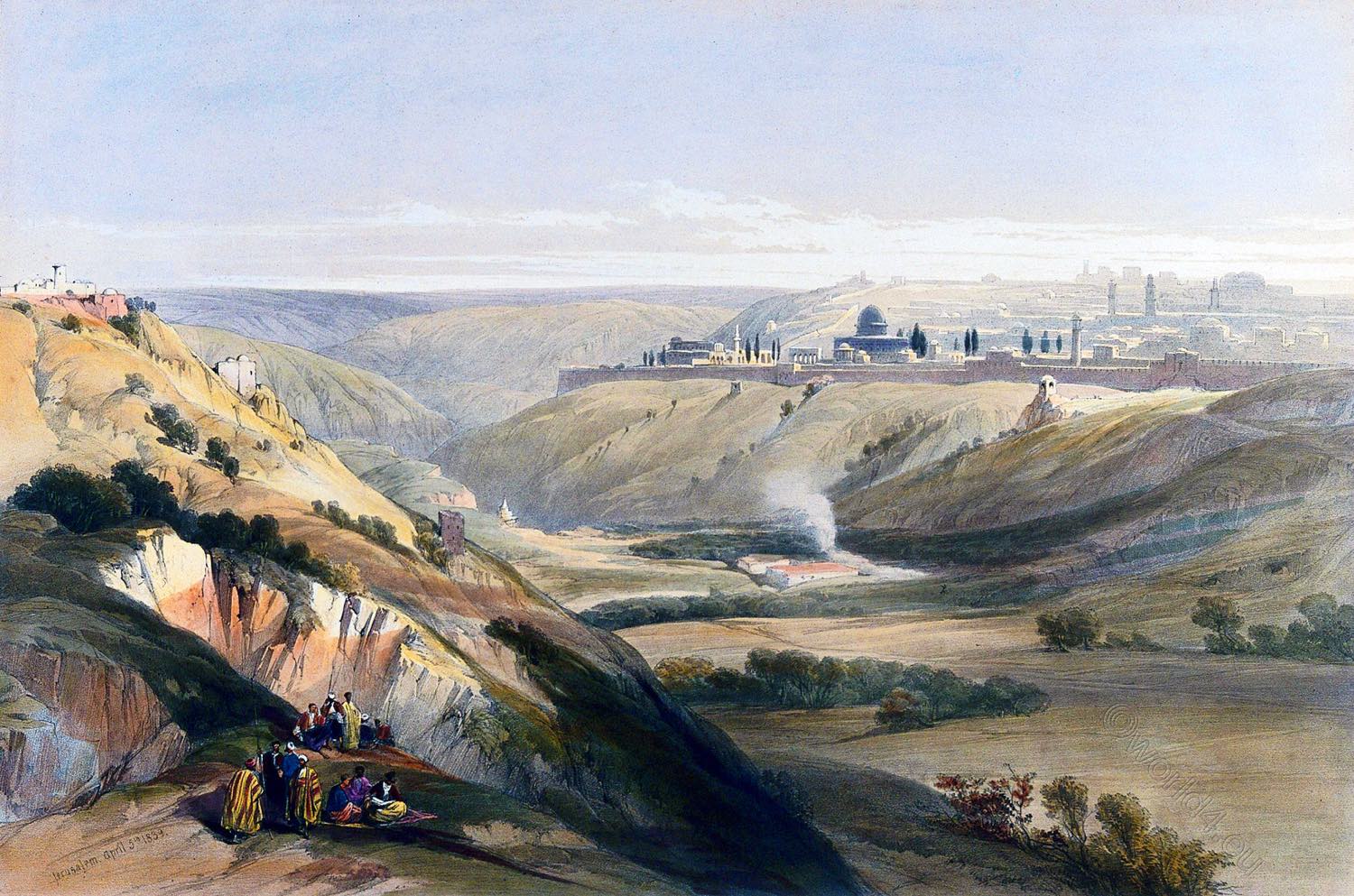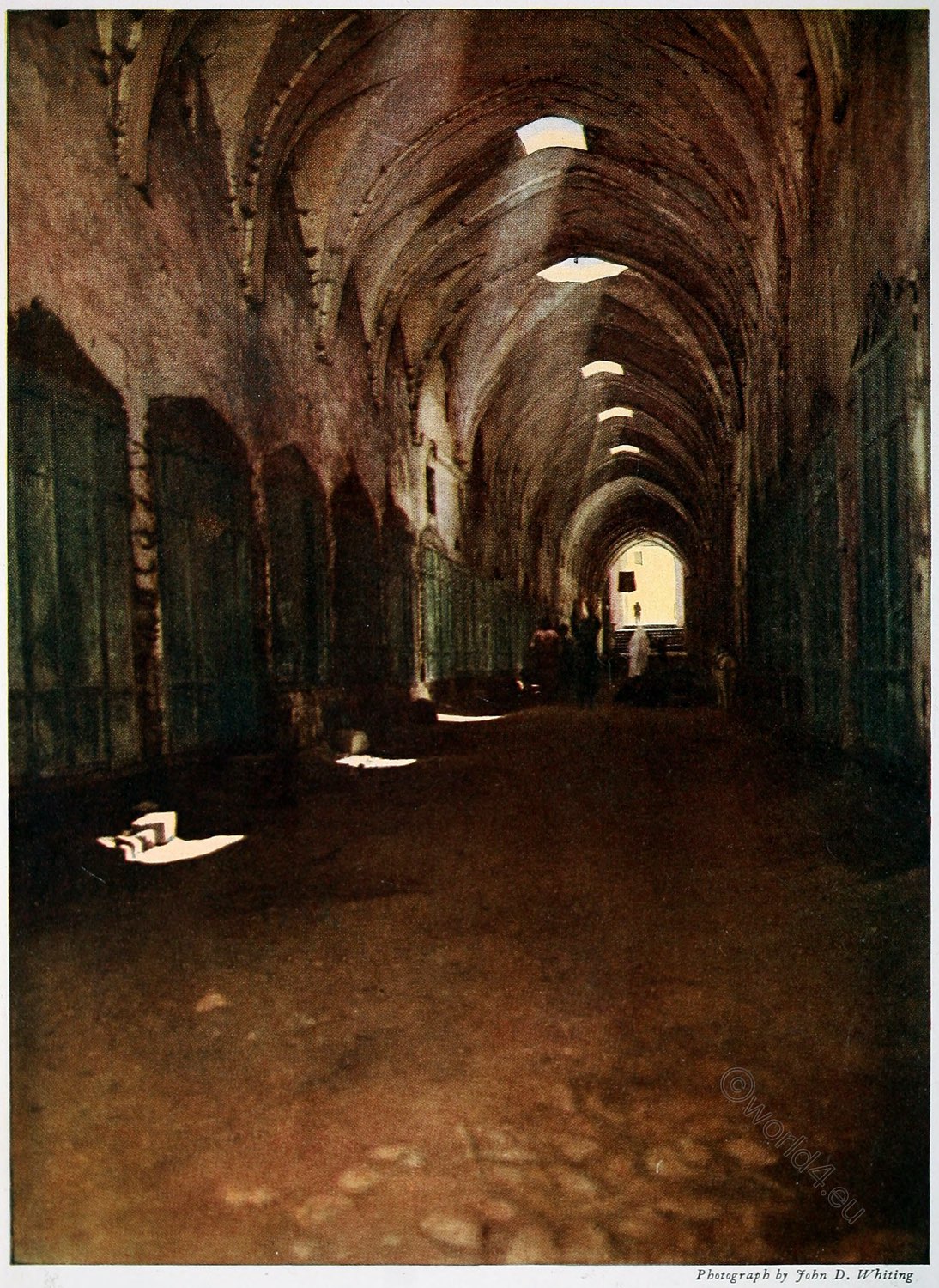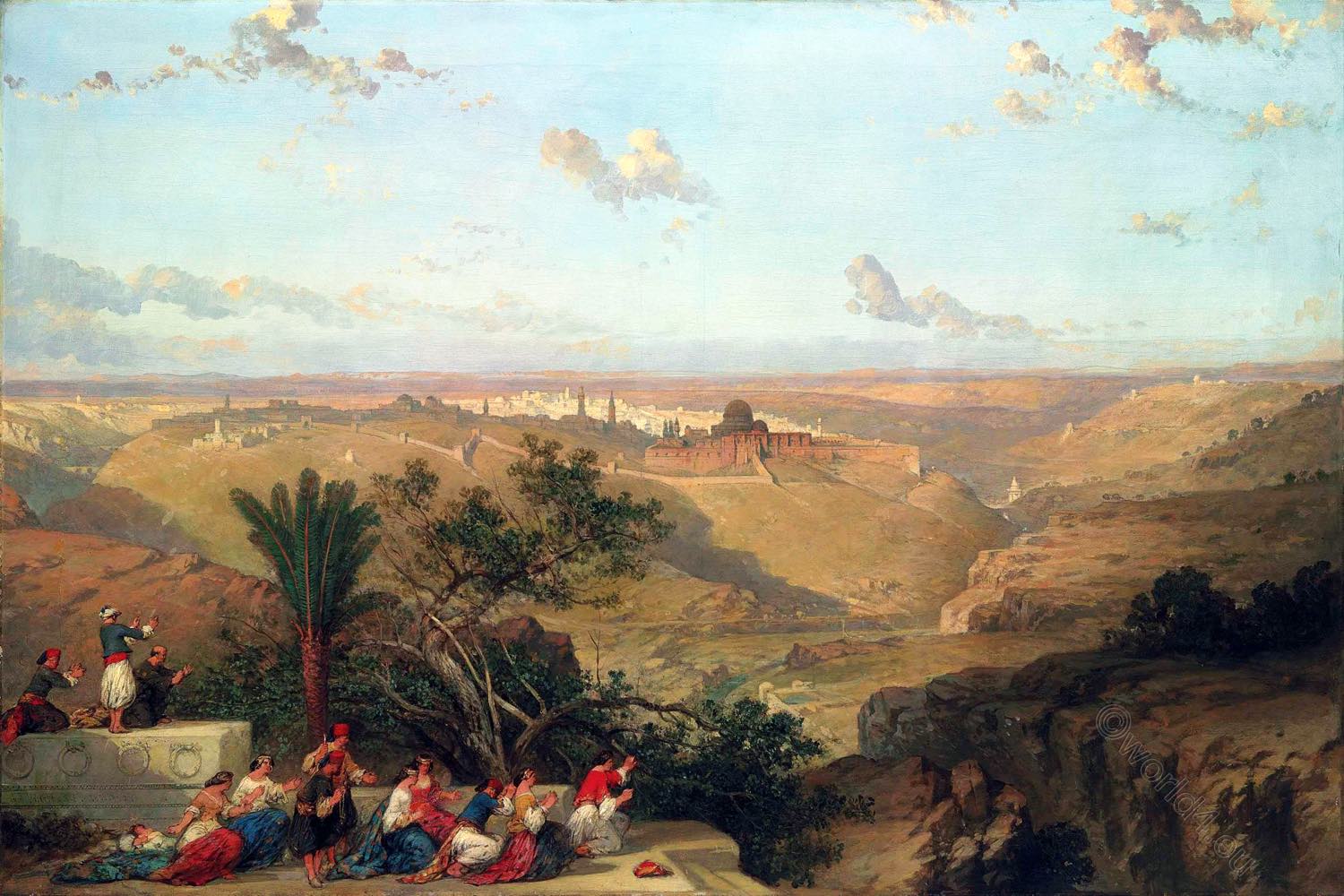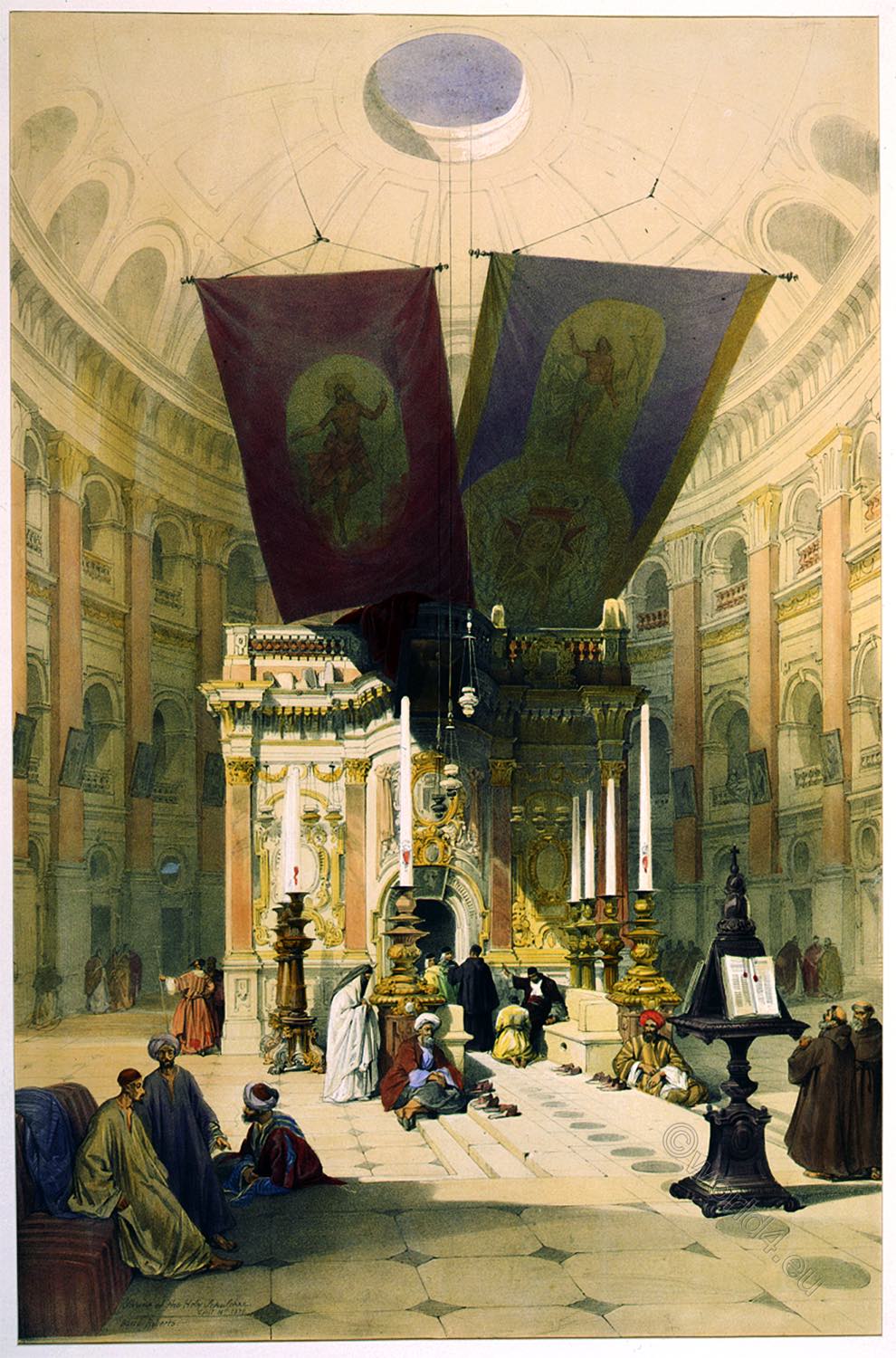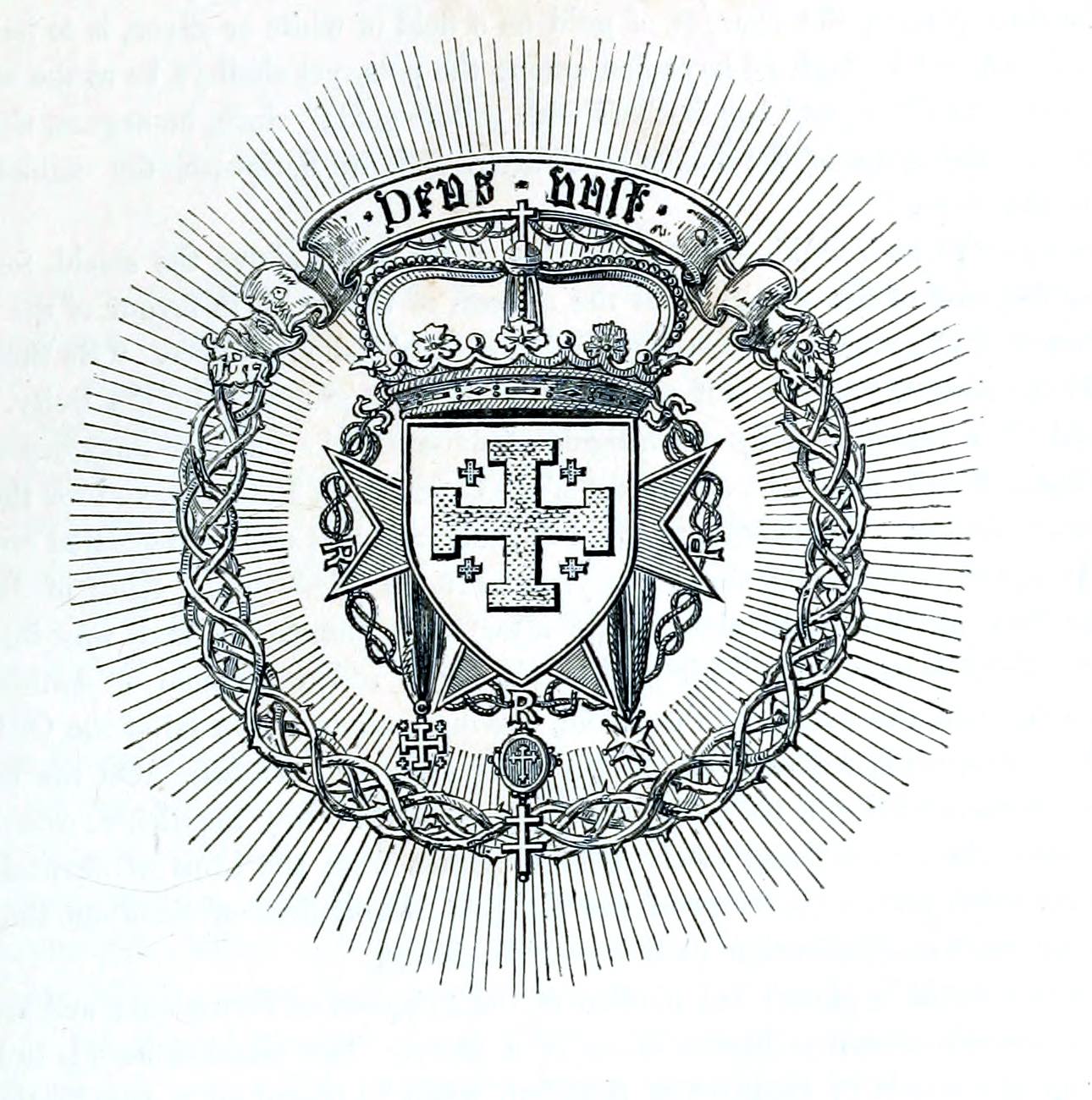
THE ARMORIAL ENSIGNS OF JERUSALEM
by David Roberts.
Exhibited in the vignette above, were appointed by the chiefs of the first Crusade, after the capture of the city on July 15th, 1099, to be borne by the Christian king then elected. The device upon the shield was an adaptation of that used for the same metropolis three centuries before, as it was wrought upon the banner sent by Thomas the Patriarch, with other relics, to Charlemagne before his coronation, in the year 800.
This Gonfanon, or Standard of Jerusalem, consisted of a square piece of white silk, to be displayed in the usual manner of a church-ensign, and on the banner was wrought a cross-potent, between four smaller plain crosses, all red, to signify the five wounds of our Lord.
On assigning these arms to Godfrey of Bouillon and his successors, the leaders of the Crusade changed the color of the crosses to gold; advisedly disregarding the well-known heraldic rule, if indeed it existed at the period, that colour shall not be placed upon colour, nor metal upon metal.
An old manuscript, cited by Andre Favine, states the reason to be, that Godfrey should have arms given to him differing from the common rule of others; “to the end that when any should see them, thinking them to be false, they should be moved to make inquiry wherefore so noble a king should bear those arms, and thus become further informed of the conquest of the Holy Land.”
Favine quaintly conjectures, that the real reason for thus placing the charges of gold on a field of white or silver, is to be found in Psalm lxviii. 13,— “Though ye have lien among the pots, yet shall ye be as the wings of a dove covered with silver, and her feathers with yellow gold;” since, he argues, the arms of Jerusalem are the arms of the Catholic Church, and, in Scripture, the emblem of the Church is the dove.
The words “Deus Vult!”— God wills it! — on the scroll above the shield, formed the unanimous response of the multitude to the address of Urban II. in favour of the Crusade, at the Council of Clermont, as related by William, Archbishop of Tyre. “Be those words, then,” said the pontiff, “your shout of battle, for they are prompted by the Deity.”
The shield is surrounded by the insignia of those religious and military orders, which were instituted for the support and honor of the Crusades in Palestine, and for the defense of the sacred country.
Immediately behind the escutcheon is the eight-pointed cross of the Knights Templars, established about the year 1119, by Baldwin II., King of Jerusalem. This cross was adopted about sixty years after their foundation, and was intended to indicate the eight Beatitudes.
Their original device, a red patriarchal or double cross, is also shown beneath the centre of the shield, having over it the medal of the Order of the Sword of Cyprus, instituted in 1195, by the King Guy de Lusignan.
On the left of the escutcheon is suspended the badge of the Knights of the Holy Sepulchre, established in 1103, by Baldwin I., consisting of the golden crosses from the arms of Jerusalem; and on the right side appears the cross of the Knights Hospitallers of St. John the Baptist, instituted by the same sovereign in the year following.
Above the shield is placed the diadem of the kingdom of Jerusalem; and around the whole is a wreath of thorns in the midst of a glory. The allusion here is to the noble conduct and the words of Godfrey of Bouillon, when he placed on a crucifix the coronet offered to him as the elected sovereign, declaring, that ” he would never wear a crown of gold in that city wherein the Saviour of the world had worn a crown of thorns.”
Source: The Holy Land, Syria, Idumea, Arabia, Egypt, & Nubia, by David Roberts, George Croly, William Brockedon. London: Lithographed, printed and published by Day & Son, lithographers to the Queen. Cate Street, Lincoln’s Inn Fields, 1855.
Continuing

